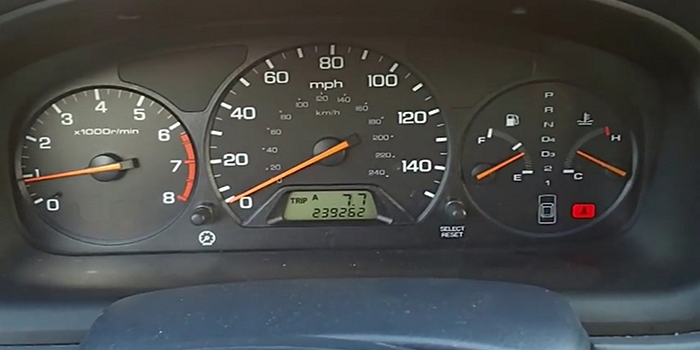Tony from Specialized Transmission Service had a 2001 Honda Accord 2.3L with the MAXA transmission, which, after rebuilding it, had a slamming into reverse-only problem. It was so bad it felt like it could break a mount. Drive to reverse or neutral to reverse was perfect.
Considering the hydraulics involved, when Reverse is selected, line pressure from the manual valve is supplied to the Reverse Clutch Pressure Control Valve (REV CPC-V). The stroking of the reverse CPC valve is controlled by the normally applied shift control solenoid valve C to manage the engagement.
Once it’s fully stroked, the reverse CPC valve routes full pressure to the bottom piston of the servo valve to engage the fork. This servo valve has a piston and a shaft and is located in an aluminum accumulator housing. Inside this servo valve is a passage from the bottom piston area to near halfway up it and out to the side of the shaft. As the fork is being applied, the circuit inside this shaft aligns with a passage in the accumulator housing to supply pressure to the 4th clutch. In short, the hydraulic design is to engage the reverse fork before the 4th clutch is applied.
If the 4th clutch were to apply before the fork engages the reverse gear, the reverse gear will go into rotation. This will cause the synchronizer to grind as it’s being pushed into a spinning reverse gear. This usually occurs when the bore for the servo valve shaft inside the aluminum housing wears allowing fork apply pressure to prematurely leak through the shaft bore and into the 4th clutch circuit.
Since the complaint is a slam shift engagement into reverse only without and grinding noises, a worn accumulator housing is not in play. This suggests that there may be a line pressure problem. Yet from neutral to reverse or drive to reverse the engagement is perfect. This implies that line pressure is not the cause. It does, however, strongly indicate some form of a computer control problem as the computer utilizes solenoids to manage and control the feel of both garage and gear shifts.
In this particular scenario, the most logical starting point would be to examine the transmission range switch (TRS), as this is the main input for the computer’s shift control logic strategy. The first check was to see what positions the vehicle could start in. Park of course worked, as well as neutral and no other ranges. This would seem to reason the switch is properly aligned. But, while conducting this quick test, it was noticed that the reverse [R] indicator light would not illuminate when in reverse (Figure 1).

Since this wasn’t an issue when the vehicle arrived, a visual inspection was made of the range switch. By doing so, it was noticed that the attaching bolts were slightly off form the original bolt marks. Immediately upon aligning the TRS, the slam into reverse problem was resolved. So much for the quick test being an accurate one.
The big question to ask is how did a slightly mis-adjusted TRS cause a slam into reverse? Looking at a solenoid application chart, shift control solenoid valve C is off in both park and reverse. But in drive and neutral it is on. From drive or neutral into reverse the engagements were perfect. The shift control solenoid valve C went from on to off. But from park to reverse it slammed with the solenoid being off in both park and reverse. Apparently, the chart fails to disclose that this normally applied solenoid does a quick off-on-off pulse during the transition from park to reverse. By doing this, it controls the reverse engagement feel through the reverse CPC valve. With a slightly out of adjusted TRS, this pulse did not occur allowing an immediate full line pressure to apply to take place slamming it into gear. We call it the MAXA slam shift!














